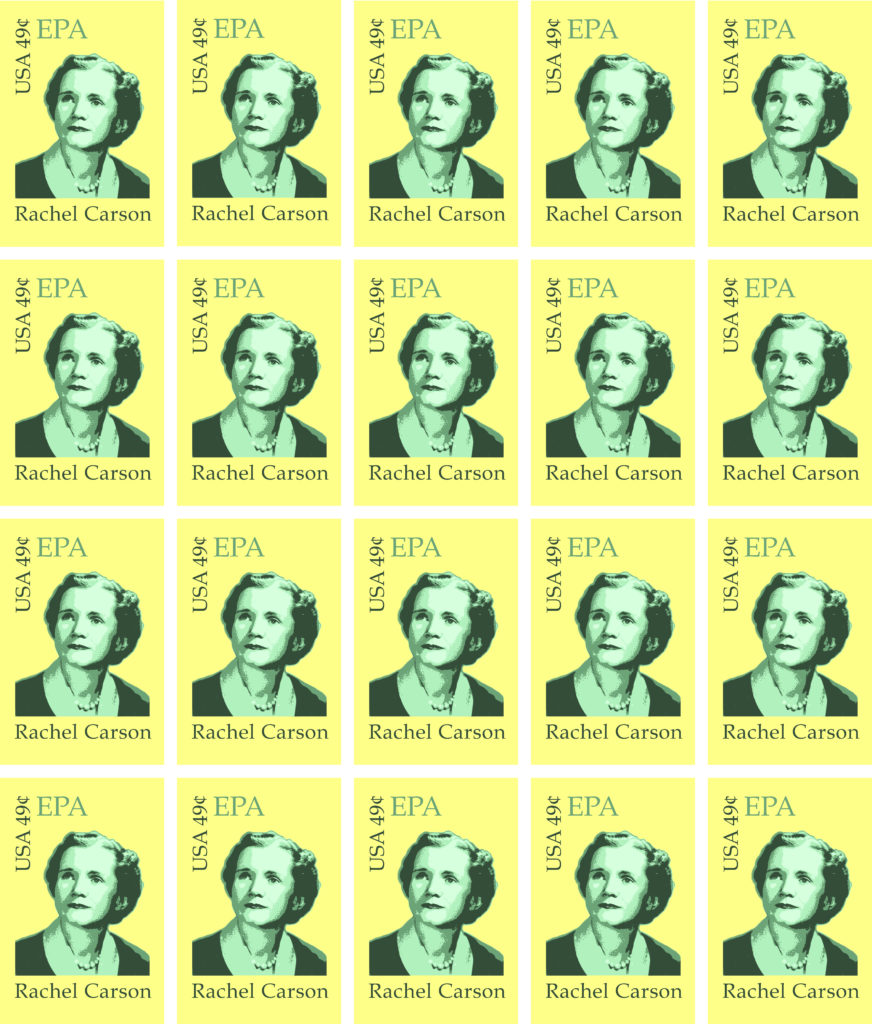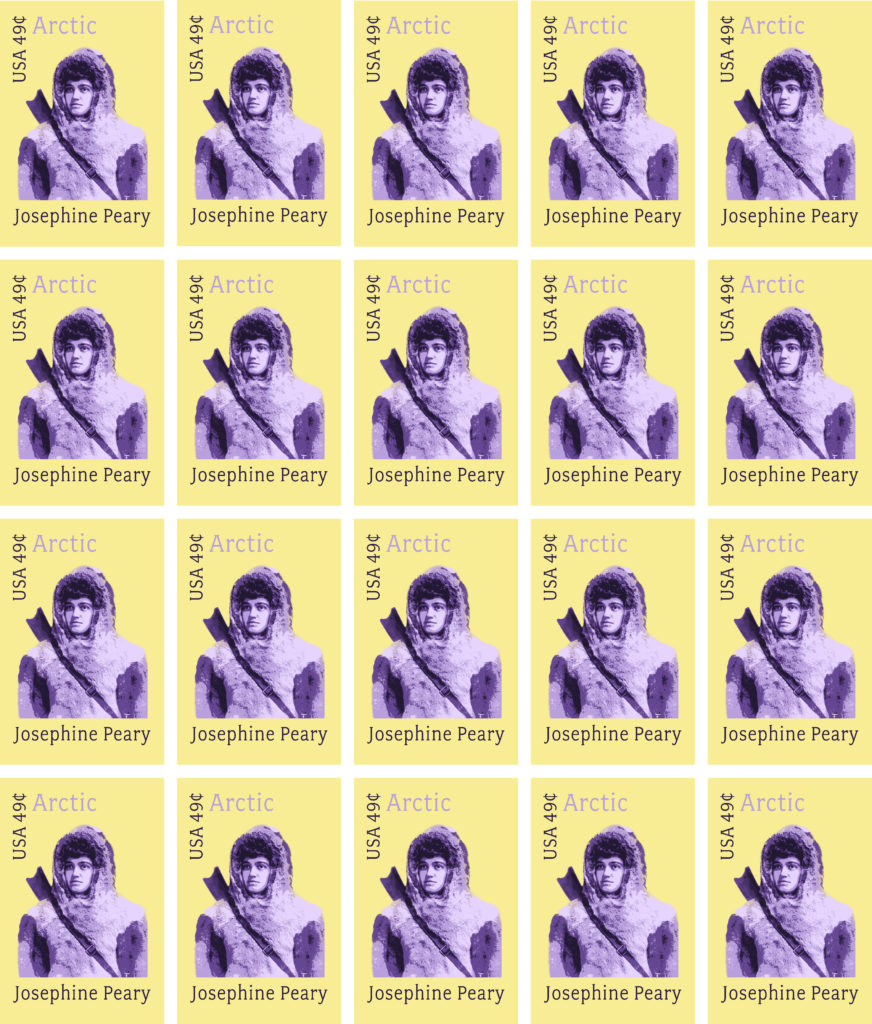The title of my project, The Moving Tides, honors the work of American author and marine biologist Rachel Carson. Her seminal book, The Sea Around Us, has introduced generations to the enigmatic nature of the sea, and her book Silent Spring published in 1962 challenged the excessive use of pesticides by the chemical industry. Carson held US policy makers accountable for allowing economic priorities and scientific hubris to wreak havoc on the natural world. Just as Carson questioned the norm, it is crucial for developed countries to examine their impact on more remote, underdeveloped parts of the world. What’s good for business can appear to be beneficial to humankind, but may have dire consequences for the environment and underrepresented populations, including plants and animals. While doing research I discovered a vintage US postage stamp featuring Rachel Carson in the archives of the Maine Women Writers Collection at the University of New England. Given the current political environment in the US and threats to the Environmental Protection Agency, which Carson helped to establish, it seemed timely to create an updated version of the stamp. Pictured below is Rachel Carson/EPA from My Stamp Collection series (digital print 42”h x 36”w). We mustn’t forget her efforts or allow them to be undone by careless and nationalistic views and behaviors.

Digital Print – 36″ w x 44″ h – 2018
The subtitle of my project, An Arctic Journey, references another author in the MWWC. The author is Josephine Peary, whose memoir, My Arctic Journal, chronicles an 1891/92 expedition to Greenland with her husband, the explorer Robert Peary. The purpose of the expedition was for Robert Peary to lead a trek across the upper part of Greenland to determine the nature of the land mass there. The expedition was supported by the Academy of Natural Sciences in Philadelphia, PA in the U.S. and resulted in a better understanding of the physical geography of Greenland, and through Josephine Peary’s writing, a greater knowledge of indigenous cultures. The tone of Josephine Peary’s journal is that of a Victorian woman; she did not emphasize her personal vision or aspirations; rather she devoted her life and her writing to her husband’s dream of exploring the Arctic and ultimately to his ambition to claim the North Pole. Through her work we can glean historical perspective on Arctic exploration and on attitudes toward the environment and indigenous peoples.
The image Josephine Peary/Arctic (digital print 42”h x 36”w) is from My Stamp Collection series. The modular images are prototypes for U.S. postage stamps and stand for women who followed unorthodox paths with relentless commitment and vision. Rachel Carson and Josephine Peary both had strong connections to Maine, and their work illustrates ways in which commerce, culture and the environment come together, sometimes in harmony and sometimes in discord.

Digital Print – 36″ w x 44″ h – 2018